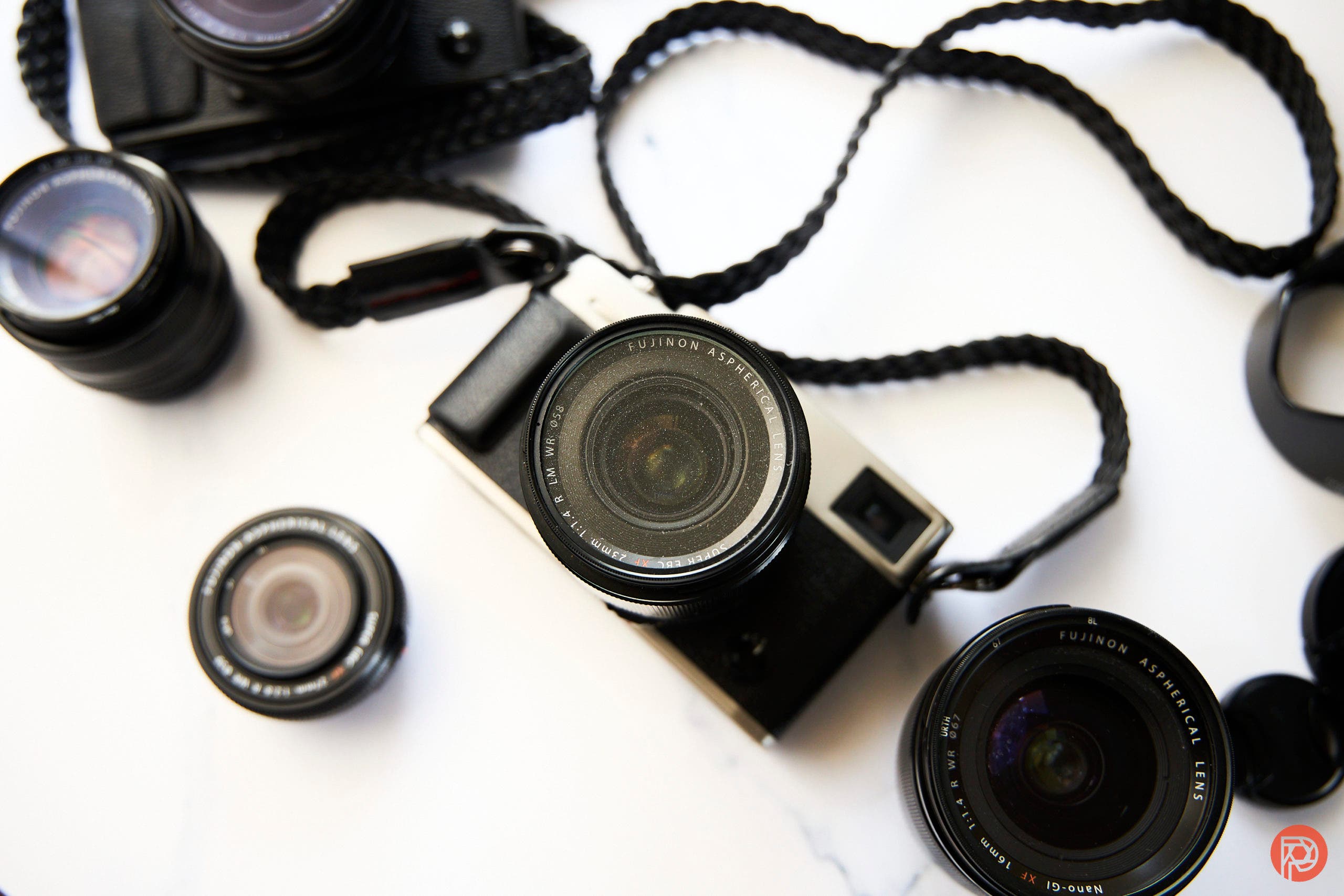Fujifilm users, to most other photographers, are a curious bunch. Many of us don’t want to sit in front of a computer editing images because we like the look of film. Of course, there are exceptions, but I believe both sides of the camp would be intrigued by Tiffen Glimmer Glass. And more importantly, I believe anyone who thinks Fujifilm’s newest lenses are too clinical would appreciate precisely what they can do for them.
What You Want to Know
First off, Tiffen Glimmer Glass isn’t for the Fujifilm photographers who care about clinical looks. Yes, people like that exist and only buy Fuji cameras for superior ergonomics. So instead, go about editing as much as you’d like.
Instead, Glimmer Glass is about getting a look in-camera without extra editing beyond a white balance shift, exposure adjustment, or a film simulation change. My filter lives on my 23mm f1.4 R WR lens and provides needed character to an otherwise stellar workhorse optic. In some cases, my photos looked a bit more medium format: so dreamy. I know that’s insane to say about APS-C cameras, but it’s the truth. The photos shot with my Tiffen Glimmer Glass attached to my X Pro 3 are genuinely some of my favorites that I’ve ever shot with Fuji cameras.

While it’s softening what’s in front of you by lowering contrast, adding haze, and theoretically nerfing clarity, it’s also boosting the image quality. Because Tiffen Glimmer Glass has these sparkles on the front of the lens, they add little specular highlights. And for anyone too young in their photographic journey to understand, let us explain.
“It first starts with specular highlights, which are extra details brought out by adding in extra light to a scene.”
Specular highlights are little points of detail that your eye and the camera both don’t naturally pick up. To get them, you need a reflector or light. A white reflector can do it, but a silver reflector truly brings out little details that add more to your photos. The problem with silver reflectors is that they often make everyone look too sharp. But if you combine that with a softening effect, you’ll get those details in a more subtle way.
The Truth About Tiffen Glimmer Glass
Let’s get something clear: all the Tik Tok influencers who say putting a stocking over your lens to get a film look are speaking complete trash. You can do the same thing with a lower-megapixel camera body and an older lens. Alternatively, you could use this filter to get an even better look.




The Tiffen Glimmer Glass filters aren’t going to give you a film look everyone talks about. But, it’s going to enhance Fujifilm’s already baked-in film simulations. And if you’re using Capture One, your images will greatly benefit from the better image quality processing engine. Alternatively, you could just shoot in JPEG and post those happily.
The point of Tiffen Glimmer Glass filters is twofold. Primarily, they add diffusion, though not with the same effect as Tiffen’s Pro Mist Black filters or Pro Mist filters (the latter adds diffusion and halation through the smoothness of the filter). But Tiffen Glimmer Glass does it by adding a lessened effect and a bit of sparkle. Quite literally, if you look at the filter, it will look like there are sparkles.
This translates into light entering the lens through this sparkly filter, then hitting the sensor, delivering a bit of shimmer and glow to whatever you photograph. Indeed, everything I shot looked immaculate.
Putting it to The Test
I used Tiffen Glimmer Glass on my Fujifilm 23mm f1.4 R WR mounted to my Fujifilm X Pro 3. During that time, I shot in the Astia film simulation, Classic Chrome, and Classic Negative. I’d also typically lock my white balance, but I let the system do what it wants. To really get a film look, I overexpose my scenes by up to one stop of light. Further, I don’t use a lens hood, because I want the full glory of the filter to come through in the images.
As I go through these photos, I’m enamored with a few things. First off, there are Fujifilm’s own film simulations. These add a unique look to the photos already, but regarding subjects with bokeh in the scene, there’s an enchanting glow I haven’t seen before. To put this into perspective, ponder the most cinematically beautiful scene you’ve witnessed on the silver screen without CGI and not animated. For me, that’s a tough one. I can think of a few Tarantino movies like Inglorious Bastards, but my mind and heart drift to scenes from The Dark Knight, Saving Private Ryan, and the Lord of the Rings. Fujifilm gives you these gorgeous film-like colors that folks would say are muted by today’s standards. But they’re genuinely film-like. Then you put a filter that makes things glow and sparkle on top of the lens while giving the scene more light, and you’ve got photos that you can stare at endlessly.

All of this is only possible when you’ve got good subject matter, too, however. So, don’t expect Tiffen Glimmer Glass to be a magical panacea that will take every photo and elevate it to Pulitzer-winning. Instead, think of it as enhancing your already-good photos. As I stare at these images, I notice little details that my camera wouldn’t have picked up unless I had brought my Profoto lights with me.
Final Thoughts
Tiffen Glimmer Glass is genuinely remarkable. You’ll see its fullest effects when you use a fast-aperture lens and actually have bokeh in the scene. If you’re shooting a far away landscape, you’ll see it a bit, but it won’t be noticeable. As long as you use the filters the way I wrote about, you’ll be smitten with the photos you create.
Tiffen Glimmer Glass can be had on Amazon pretty easily. Go check them out!



Leave a Reply